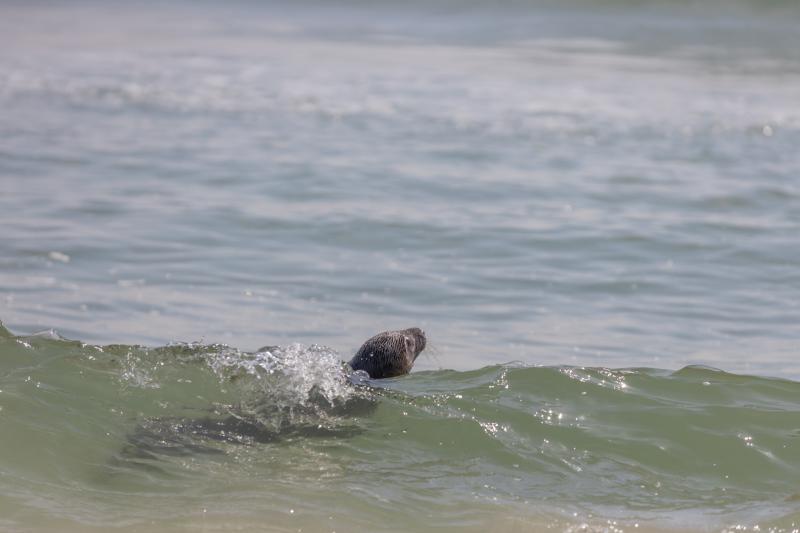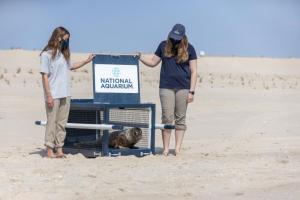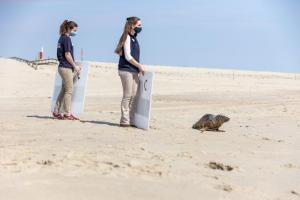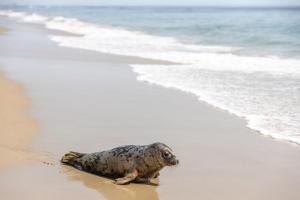After 42 days of rehabilitation at the National Aquarium’s Animal Care and Rescue Center in Baltimore, Eloise the grey seal pup was ready to return to her ocean home.
According to a National Aquarium press release dated April 8, Eloise bid farewell to the center and was released into the ocean at Assateague State Park April 7.
Nicknamed Eloise in keeping with the rescue center’s naming theme of famous storybook characters, the seal was rescued from Cape Henlopen State Park by the Marine Education, Research and Rehabilitation Institute. She arrived Feb. 14 at the National Aquarium’s Animal Care and Rescue Center malnourished and with a few lacerations on her neck.
Much like her namesake, Eloise quickly charmed the staff with her antics. She also easily progressed through her rehabilitation goals. As she was still considered a maternally dependent pup, meaning that if she were in her natural habitat, she would be relying on her mother for milk, Eloise’s rehab has been focused on nutrition and transitioning her from gruel to learning how to eat fish on her own. During her stay, Eloise enjoyed swimming in her pool and prior to her release was eating up to 10 pounds of herring a day.
“Eloise surpassed all of her rehabilitation milestones, making her eligible for release into the ocean, according to our partners at the National Oceanic and Atmospheric Administration,” said Jennifer Dittmar, National Aquarium animal rescue director. “The ultimate goal for all of our rescue patients is release back into their natural habitats, so it’s always a great day for our team when we can make that happen.”
The National Aquarium continues to care for harp seal Stuart Little. He now weighs 55 pounds and loves to roll around in ice the staff offers on the pool deck. The animal health and rescue teams expect that Stuart Little will be ready for release in the next month.
The National Aquarium's Animal Rescue program is responsible for responding to stranded marine mammals and sea turtles along the nearly 3,190 miles of Maryland coast. It also works with stranding partners through the Greater Atlantic Region Stranding Network to help respond, rescue and release animals year-round.

























































